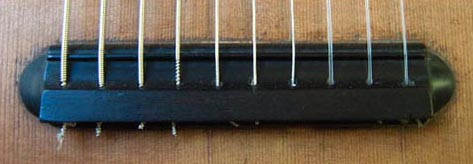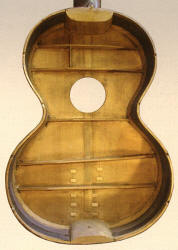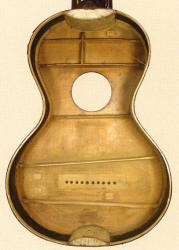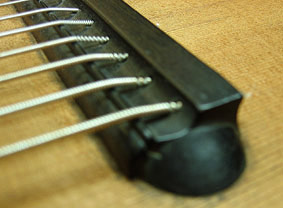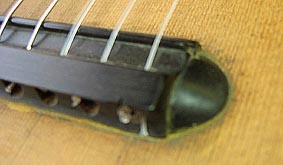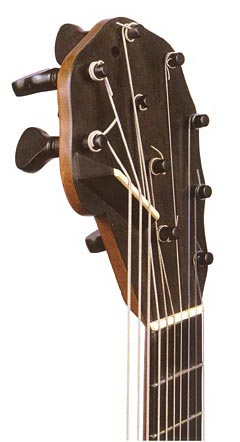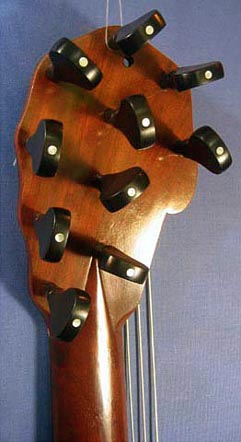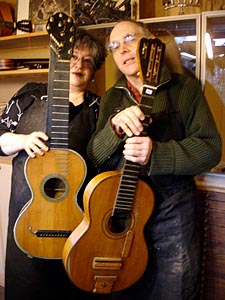|
Featured Harp Guitar of the Month |
|
A Unique Lacôte Décacorde by Françoise Sinier de Ridder All images copyright Françoise Sinier de Ridder
|
|
This
Lacôte
décacorde,
made in Paris circa 1830, features something rather interesting and
unusual - a bridge without holes or pins. To our knowledge, it
is the only guitar made by
Lacôte
in this way. We know that during his
career,
Lacôte
made custom instruments for players who requested special
arrangements or measurements, but this particular bridge is a real
mystery.
When we restored this
decacorde, we had to open it because the braces had come loose, and there were two small cracks on the
belly under the bridge. And, surprise - the top was not drilled. It
really was the original bridge! |
|
Who did
Lacôte
make
this particular guitar for? Perhaps Aguado, who always said that he did
not like bridges with holes and pins. He preferred Spanish-style
bridges, as we can see on the two guitars
(one
Lacôte and one Laprevotte) that he bequeathed to his home
town, Madrid, which both have
non-original
oval bridges without
holes
(we think Aguado asked to change those bridges).
The rest of the guitar follows the usual template for a decacorde in the Legnani style, except that it is smaller than usual. Measurements are: total length: 89.5 cm; body width: 30.2 cm; body length: 42.5 cm; string length (fingerboard): 59.2 cm. |


